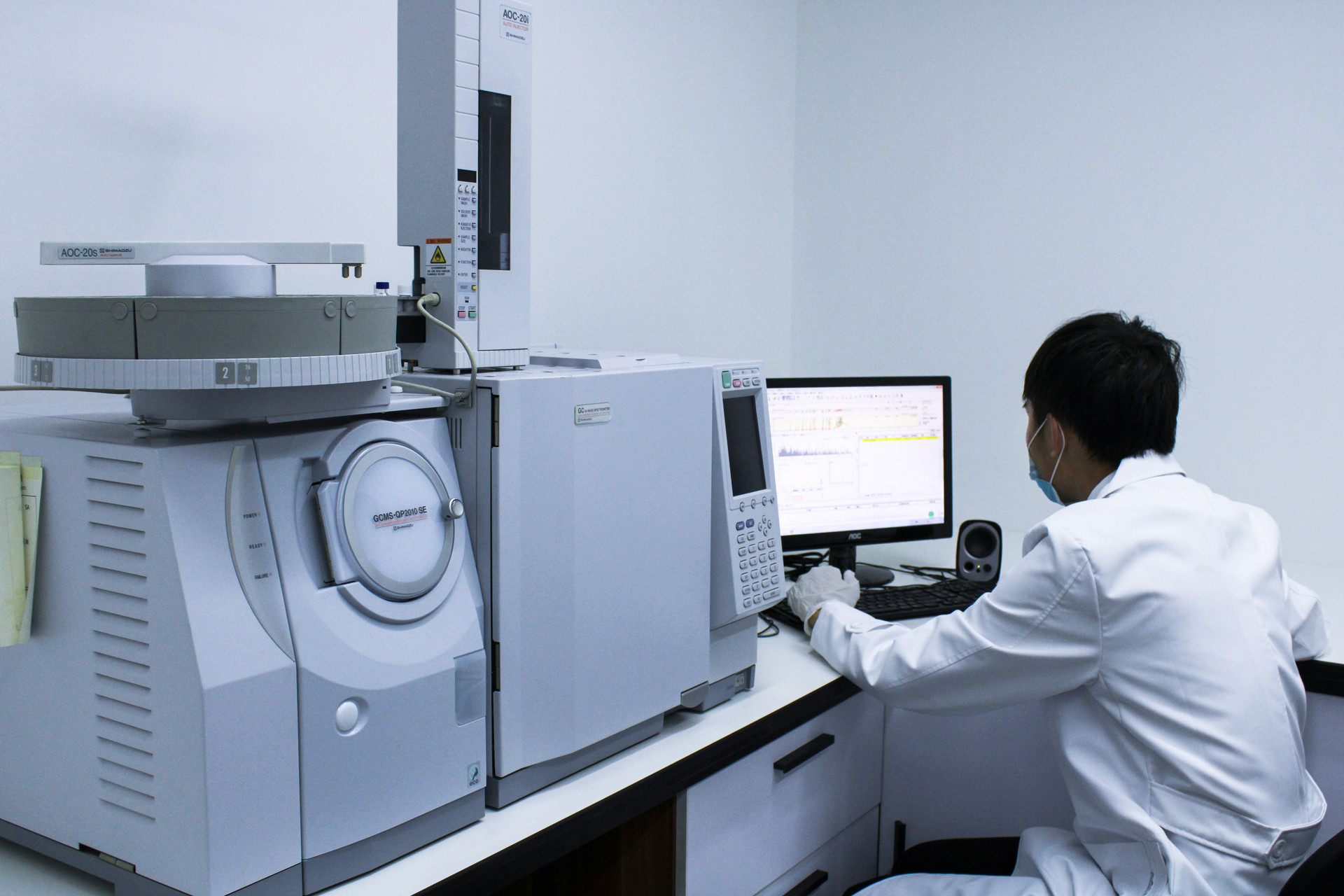Achieving Purity in Superalloys: The Importance of GDMS in Advanced Casting Processes
Superalloys, particularly those used in high-performance industries like aerospace and aviation, energy, and defense, are critical components in systems exposed to extreme conditions. These materials must be carefully engineered to maintain strength, durability, and corrosion resistance at high temperatures, making purity a vital factor in their performance. Achieving this purity requires precise testing methods, and Glow Discharge Mass Spectrometry (GDMS) stands out as one of the most reliable techniques in superalloy production.
In this blog, we explore what GDMS is, how it works, its benefits, the superalloy parts that need testing, and how it compares to other testing methods. Additionally, we will examine the industries that rely on GDMS to ensure the integrity of their superalloy components.

What is GDMS (Glow Discharge Mass Spectrometry)?
Glow Discharge Mass Spectrometry (GDMS) is an advanced elemental analysis technique used to measure the composition of solid materials. The process involves using a glow discharge to ionize the surface of a sample and then analyzing the ions using a mass spectrometer to determine the types and quantities of elements present.
GDMS is particularly valuable for detecting trace elements in solid alloys, making it ideal for applications where purity is critical, such as in aerospace and nuclear sectors. Unlike other elemental analysis methods, GDMS can analyze solid materials directly, without requiring them to be dissolved, which is advantageous when dealing with complex superalloys and materials with intricate microstructures.
In GDMS, the material is subjected to a low-pressure gas environment, typically argon, where a high-voltage electric field produces a glow discharge. This discharge causes atoms at the surface of the material to ionize. The mass spectrometer then accelerates and analyzes these ions, allowing for precise measurement of the elemental composition, including trace elements that can significantly impact the material’s properties. This capability is particularly beneficial in superalloy reactor vessel components, where elemental purity is essential for performance under extreme conditions.
Benefits of GDMS in Superalloy Production
GDMS (Glow Discharge Mass Spectrometry) offers several key advantages when testing superalloy parts, making it an indispensable tool for manufacturers requiring the highest levels of purity and material consistency.
High Sensitivity: GDMS can detect trace elements at low parts-per-million (ppm) levels, allowing for a highly detailed understanding of the material’s composition. This high sensitivity is crucial for superalloys, where even minute impurities can significantly affect performance. This precision is essential in processes like vacuum investment casting, where the purity of the material directly impacts the integrity of the final product, such as turbine blades or combustion chambers.
Accuracy: The technique provides highly accurate results, which is essential when testing superalloy compositions that must meet stringent industry standards. The ability to detect and quantify low concentrations of critical elements ensures that superalloy components meet required strength, temperature resistance, and corrosion resistance specifications. This level of accuracy is critical for industries such as aerospace and energy, where high-performance superalloys are subjected to extreme conditions.
Non-Destructive: GDMS is a non-destructive testing (NDT) method. Unlike some tests that require sample preparation or destruction, GDMS preserves the sample's integrity, allowing manufacturers to test multiple components without risking material loss or degradation. This non-destructive feature is essential in applications like superalloy precision forging, where preserving part integrity is paramount for high-stress environments such as turbine discs and blades.
Versatility: GDMS can be used on a wide range of materials, including various superalloys like Inconel, CMSX series, and Rene alloys. This versatility makes it an essential tool for manufacturers working with various alloys in high-performance applications. For example, in superalloy directional casting, where the alloy composition is critical to the final part’s mechanical properties, GDMS ensures that the correct alloying elements are in the necessary quantities.
Speed: While GDMS provides highly detailed results, it is also relatively fast. This speed is crucial for large-scale production environments where quick feedback is necessary to maintain quality control throughout manufacturing. In processes like powder metallurgy turbine disc production, GDMS allows for rapid quality checks, ensuring that production timelines are met without compromising on the quality of the final components.
Superalloy Parts Requiring GDMS Testing
GDMS (Glow Discharge Mass Spectrometry) testing is critical in ensuring the quality and reliability of superalloy components used in demanding industries, where even slight variations in material composition can lead to performance degradation or failure. Key parts that benefit from GDMS testing include superalloy castings, CNC machined superalloy parts, and 3D printed superalloy parts, all of which must meet strict purity standards to perform reliably under extreme conditions.
Superalloy Castings
Superalloy castings, such as turbine blades, combustion chambers, and nozzle rings, are often exposed to severe thermal and mechanical stresses. These components are typically produced using advanced casting processes, which require meticulous control over material composition to meet the exacting standards necessary for reliability. GDMS testing is essential in verifying that these superalloy castings adhere to stringent purity requirements, ensuring they can perform optimally in high-stress environments such as gas turbines or jet engines.
CNC Machined Superalloy Parts
To achieve precision, many superalloy components, including turbine discs, impellers, and guide vanes, undergo CNC machining. GDMS testing confirms that the material composition remains consistent after machining. Any deviation in alloy composition can impact the material’s strength, thermal resistance, or other mechanical properties. GDMS ensures that CNC machined superalloy parts maintain the integrity of their composition, even after complex machining processes, thus guaranteeing their performance in demanding applications like aerospace or power generation.
3D Printed Superalloy Parts
The growing use of 3D printed superalloy parts in industries such as aerospace and automotive has introduced new challenges regarding material purity. Additive manufacturing techniques can lead to variations in the material's structure and composition, making ensuring the alloy's purity critical. GDMS is a reliable method for testing the composition of 3D printed superalloy parts, detecting even the smallest impurities that could affect the part's performance under high temperatures and mechanical stresses. This ensures that 3D printed components, such as jet engine parts or structural components, meet the necessary standards for safety and performance.
Comparison with Other Testing Methods
GDMS vs. X-ray Fluorescence (XRF)
X-ray Fluorescence (XRF) is another non-destructive testing method used for elemental analysis. However, compared to GDMS, XRF is less sensitive, particularly for detecting trace elements in complex alloys. It is also limited in its ability to quantify elements present in very low concentrations. GDMS is preferred when high sensitivity and accuracy are needed, especially in applications where even small amounts of impurities can compromise the performance of superalloy components, such as in gas turbines or aerospace applications.
GDMS vs. Inductively Coupled Plasma Optical Emission Spectroscopy (ICP-OES)
Inductively Coupled Plasma Optical Emission Spectroscopy (ICP-OES) is widely used to analyze the elemental composition of liquids and solutions. While it is highly accurate for liquid samples, it is less effective for solid materials like superalloys. GDMS, in contrast, is specifically designed for solid sample analysis and excels at detecting trace elements in alloys, especially in high-temperature alloys where precision is critical to performance.
GDMS vs. Spectrometric Methods (e.g., Direct Reading Spectrometers)
Spectrometric methods like direct reading spectrometers are faster than GDMS but are typically less accurate regarding trace element detection. While direct reading spectrometers can provide quick results, they often fall short in high-performance applications where impurity levels must be tightly controlled, such as in aerospace turbine blades or chemical reactors. GDMS, on the other hand, ensures precision and is ideal for critical applications where even minor composition variations can significantly affect component performance.
GDMS vs. Metallographic Microscopy
Metallographic microscopy is an excellent tool for examining the microstructure of materials and detecting surface anomalies. However, it does not provide direct measurements of elemental composition. It is often used with GDMS for a more complete material quality analysis. While microscopy is essential for examining physical structure and surface integrity, GDMS is the superior choice for purity analysis, especially when precise measurements of trace elements are needed in superalloy components used in mission-critical applications like turbine blades, engine components, and aerospace systems.
Industry and Applications Using GDMS for Superalloy Parts
GDMS (Glow Discharge Mass Spectrometry) is indispensable in industries where superalloy parts are exposed to extreme operating conditions. This advanced technique ensures the purity and integrity of critical components by accurately detecting impurities at parts-per-million (ppm) levels. Below are some of the key sectors and applications where GDMS is used to ensure the performance and reliability of superalloy parts.
Aerospace and Aviation
In the aerospace and aviation, superalloy parts like turbine blades, heat exchangers, and nozzle rings must withstand extreme temperatures and mechanical stresses. GDMS testing ensures that these components meet the strict purity standards for reliable performance in jet engines and other critical systems. For example, superalloy jet engine components require flawless material composition to perform at peak efficiency, even in the most demanding flight conditions. GDMS helps identify even the smallest impurities, ensuring that no defects compromise the part’s performance.
Power Generation
Superalloy components such as turbine blades, combustion chambers, and heat exchangers are critical in the power generation sector. These parts are exposed to high temperatures, pressures, and thermal cycling, where material failure could lead to catastrophic consequences. GDMS testing verifies that the alloy composition is within precise parameters, ensuring that the superalloy parts can withstand the demanding conditions found in power plants. For instance, superalloy heat exchanger parts are tested to ensure they maintain thermal stability and resist corrosion over extended periods of operation.
Oil and Gas
The oil and gas industry uses superalloys in components exposed to extreme pressures, temperatures, and corrosive environments. GDMS testing is crucial for verifying parts' purity, such as pump components, valves, and heat exchangers. This testing ensures that these parts will perform reliably in the field, preventing premature failure in critical applications. For example, high-temperature alloy pump components are subjected to GDMS analysis to ensure resistance to corrosion and wear, guaranteeing their durability in harsh operational environments.
Military and Defense
GDMS testing plays a critical role in the military and defense sectors, where superalloy parts such as missile components, armored systems, and firearms must meet the highest strength, corrosion resistance, and reliability standards. GDMS ensures that these components are free from impurities that could compromise their structural integrity, ensuring they perform as required under extreme conditions. For instance, superalloy armor system parts are tested to ensure they can withstand impacts and corrosion while maintaining strength and durability in combat situations.
Nuclear
In the nuclear industry, components such as reactor vessels, control rods, and heat exchangers must meet extremely high standards of purity to ensure the safety and efficiency of nuclear power plants. GDMS is essential in verifying the composition of these critical parts, ensuring that they are made from high-quality alloys that will perform reliably under intense radiation and high-temperature conditions. For example, nickel-based alloy control rod modules are tested to ensure they maintain structural integrity and resist corrosion in the harsh environment of a nuclear reactor.
GDMS ensures that superalloy parts across these industries are composed correctly, free from impurities, and capable of performing reliably in the most demanding environments. By ensuring material purity and composition, GDMS helps maintain the safety, reliability, and longevity of critical components used in aerospace, power generation, oil and gas, military, and nuclear applications.
FAQs
What is the difference between GDMS and X-ray Fluorescence (XRF) for testing superalloys?
How does GDMS detect trace elements in superalloys?
Why is purity so important in superalloys used in aerospace and military applications?
How does GDMS compare to other elemental analysis techniques in terms of sensitivity and accuracy?
What types of superalloy parts are typically tested using GDMS?



